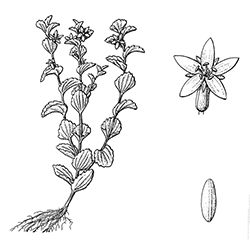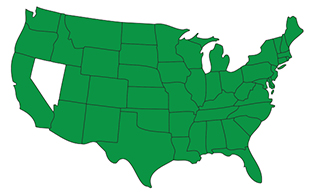

Venus' Looking Glass
Triodanis perfoliata
Venus’ Looking Glass is a winter or summer annual broadleaf weed that can occasionally grow as a perennial broadleaf weed. This highly versatile plant is also commonly known as Round-leaved Triodanis or Clasping Bellwort. Its scientific name is Triodanis perfoliata.
Identify

Alternate

Upright
Venus’ Looking Glass is identified by stems that are sparsely branched, rough and sometimes hairy on the lower portions. Its leaves are palmately veined, with heart-shaped bases that clasp the stem. Venus’ Looking Glass exudes a milky sap from its stems when they are broken or cut. In bloom, Venus’ Looking Glass features flowers in clusters of one to three in the leaf axils. The petals are long tubes that are deep purple to pale lavender in color. Reproduction occurs by seeds.
Life Cycle
This broadleaf weed is typically found in fields, sand prairies, lake borders, thin or bare lawns, and disturbed areas along railroads and roadsides where there is rocky or sandy soil. It grows throughout much of the continental United States.

Control
Proper cultural practices, such as proper mowing and watering, can help prevent Triodanis perfoliata by creating dense grass, which inhibits this broadleaf weed’s ability to grow. Physical removal (i.e., pulling weeds) can be effective, though you run the risk of spreading the seeds to additional areas of your lawn.




Facebook
X
Youtube
Copy Link
Email